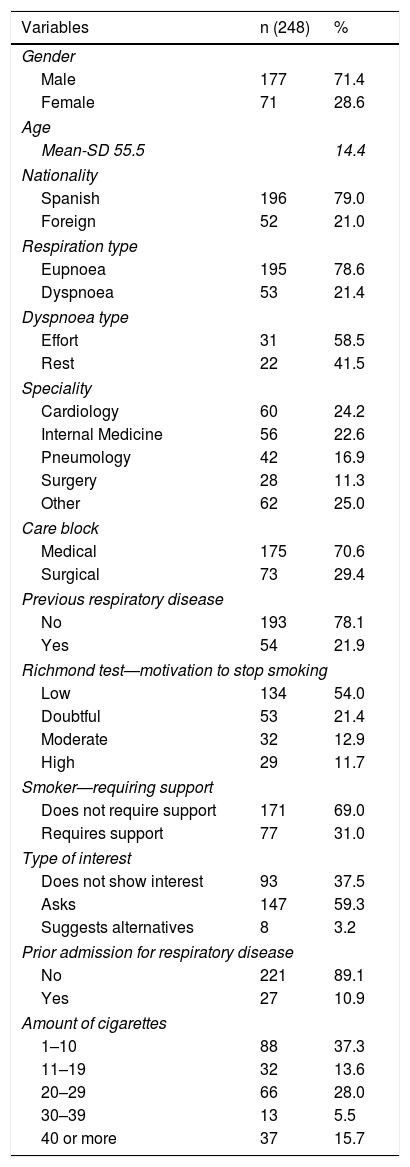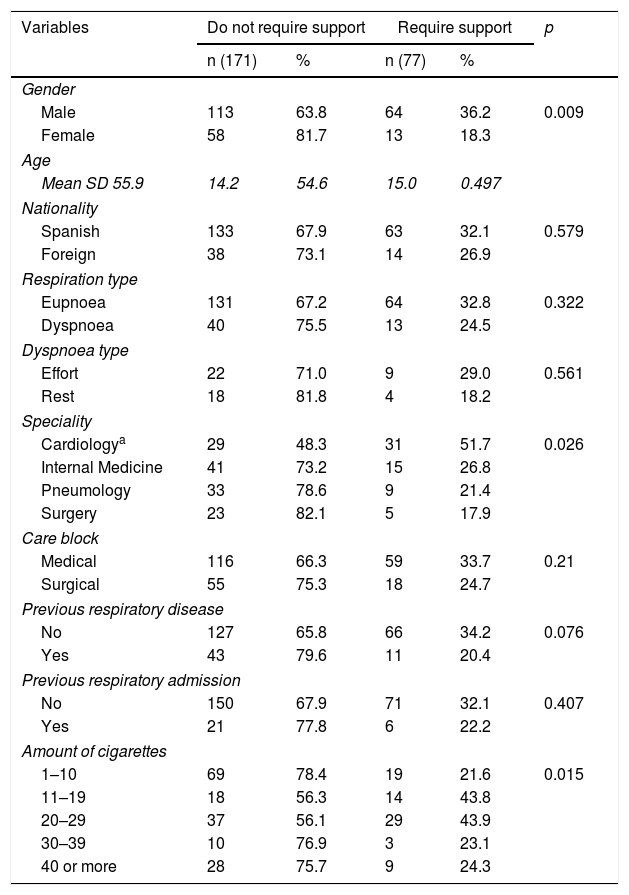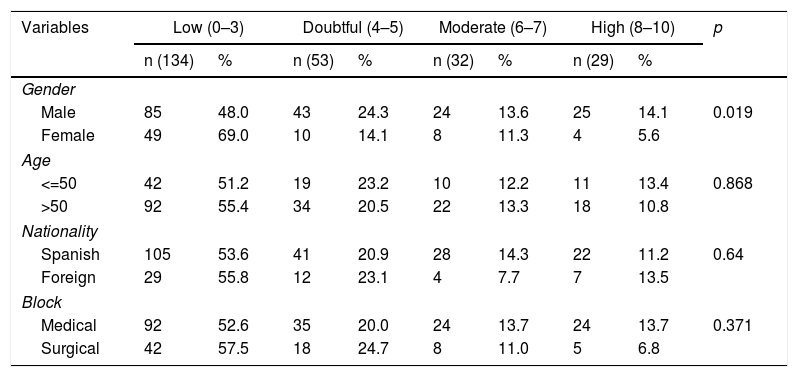To assess motivation to quit smoking in patients admitted to an acute care hospital, determine predictors of readiness to change, and identify a risk group that requires targeted motivational interviewing.
MethodsA cross-sectional descriptive study. A retrospective study was performed on the medical records of 248 patients aged >18 years with smoking habits admitted to the medical and surgery units of a district hospital between May 2014 and April 2015. The data collected included sociodemographic data, data on respiratory function, number of cigarettes smoked per day, motivation to quit smoking, patient-reported readiness to quit, history of respiratory diseases and previous admissions.
ResultsThe Richmond test revealed that 54% of patients (n=134) were poorly motivated to quit smoking vs. 11.74% (n=29) who reported to be highly motivated. The group of patients who reported to be willing to receive support (n=77) was prevailingly composed of men (p=0.009) admitted to a medical care unit (p=0.026) – mainly the Unit of Cardiology (51%) – who smoked 11/29 cigarettes/day (p=0.015). Dyspnoea at admission, a history of respiratory disease and previous admissions for respiratory problems were not predictors of readiness to quit.
ConclusionsThis study identifies a risk group of patients with respiratory disease, low motivation to quit smoking and poor readiness to receive smoke cessation support, that should be the target of motivational approaches to behaviour change.
Evaluación del nivel de motivación para la cesación tabáquica en los pacientes que ingresan en un hospital de agudos, identificación de los factores que predicen el inicio del cambio y establecimiento de un grupo de riesgo susceptible de intervención.
MétodoEstudio transversal descriptivo. Evaluación retrospectiva de las historias clínicas de 248 pacientes fumadores mayores de 18 años ingresados en unidades médicas y quirúrgicas de un hospital comarcal, entre mayo de 2014 y abril de 2015. Se valoraron datos sociodemográficos, variables relacionadas con la necesidad de respirar, consumo de cigarros/día, motivación para la cesación tabáquica, interés manifestado y antecedentes de patología respiratoria e ingresos previos.
ResultadosEl resultado del test de Richmond indicó que el 54% de los pacientes (n=134) tenía una baja motivación para dejar de fumar frente al 11,7% (n=29) que manifestaron una alta motivación. El grupo de pacientes que quería recibir ayuda (n=77) estaba constituido fundamentalmente por hombres (p=0,009), ingresados a cargo de especialidades médicas (p=0,026) principalmente cardiología (51,%) y consumidores de 11-29 cigarrillos/día (p=0,015). La presencia de disnea al ingreso, antecedentes de patología respiratoria e ingreso en el año previo por motivos respiratorios no constituyeron variables predictivas para obtener una respuesta motivadora hacia la cesación tabáquica.
ConclusiónSe evidencia un grupo de pacientes afectados respiratoriamente con baja motivación para dejar de fumar que no quieren recibir ayuda y que deben ser considerados grupo diana para planificar estrategias motivadoras para el inicio del cambio.









